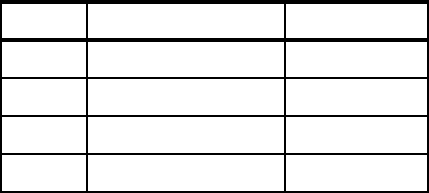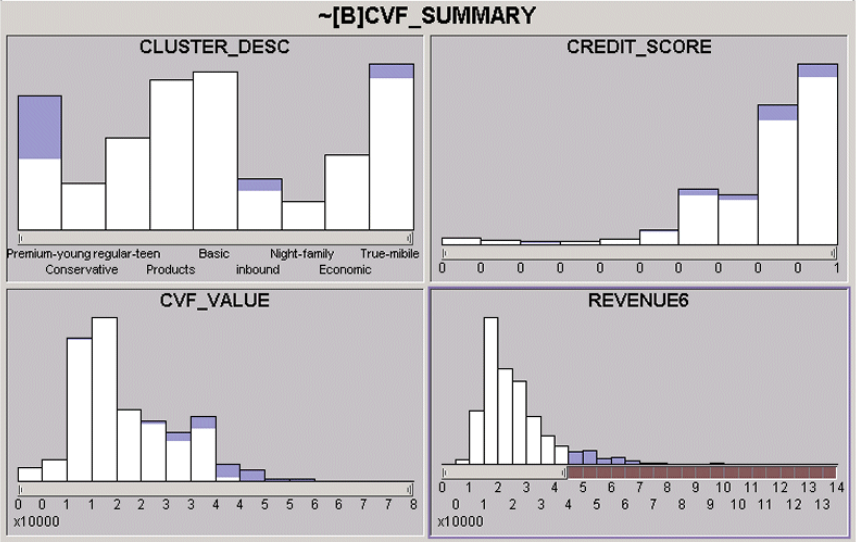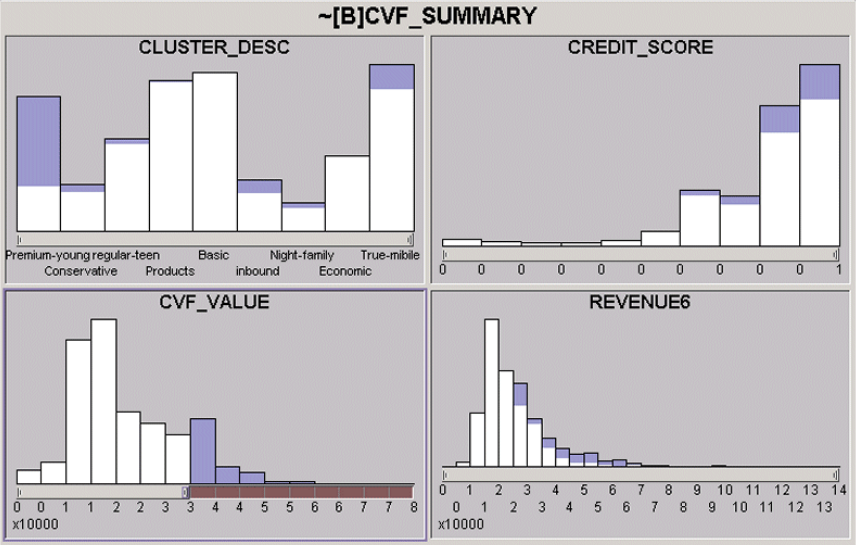
126 Mining Your Own Business in Telecoms Using DB2 Intelligent Miner for Data
6.6.2 CVF
As described earlier, the steps to generate customer values for each customer
are:
Using IM for Data application mode, apply the prediction model to your entire
customer database, then you’ll get a credit risk for each customer.
Using IM for Data application mode, apply the behavioral segmentation model
to your entire customer database, assign a segment to each customer, then
you can calculate behavior measure from that.
Based on that credit risk, behavior measure, you’ll get customer values for
each customer using the formula:
CVF = Average (Revenue for each customer, Behavior measure)
multiplied by (Credit score
)
Where, Credit score is 1 - Credit risk.
Now, you can interpret the customer values which are now assigned for your
customer. You can see the distribution associated with customer value to check
whether the customer value is meaningful.
CVF value per each segment
Figure 6-7 shows the distribution of customer value and credit risk and revenue
by each segment. If you look at the segment 4-Night family, which is at the
bottom of the picture in Figure 6-7, customer value distribution is much higher
than revenue and has a relatively high credit score. Night family is a good
customer group in terms of customer value, which may not be found if revenue is
only used as a customer value measurement.
Revenue share compared to credit risk
The revenue was not used as an input variable inside the credit risk prediction
model. However, an inverse relationship between revenue and credit score is
straightforward as shown in Table 6-4. The high revenue share clusters appear,
in average, with high credit risk (low credit score). This important result shows
the dangers of using only revenue as a customer value measure.
Table 6-4 Segment rank by revenue share and credit score
Rank Revenue share Credit score
1 Segment0 (21.8%) Segment5
2 Segment3 (15.0%) Segment7
3 Segment1 (13.9%) Segment8
4 Segment6 (11.1%) Segment1









